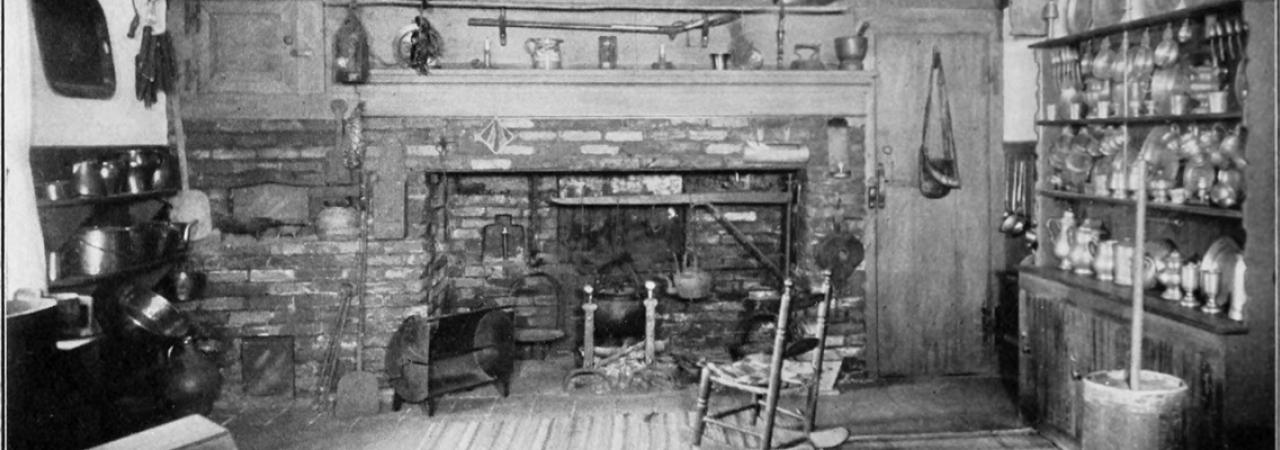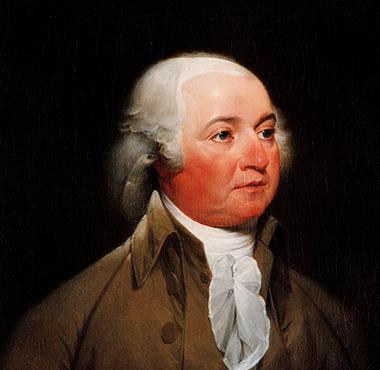
When we peel back the layers of American history, we are often tasked with trying to identify what people of the time were thinking and doing to survive. They were people, just like us, but who lived in a time that would be perceived as backward in many ways to the modern American. But that doesn’t mean we cannot understand their world and how it set up what would eventually give way to the American culture we’ve come to know.
For one thing, colonists did not identify themselves as Americans. At least, they did not view themselves as a continental people. Most colonists viewed themselves as members of whichever town or colony they resided in. This tribal-way-of-thinking is reminiscent of rooting for your favorite sports team or showing pride for your hometown. You place far more value in your own club or community than you do in a rival’s or strangers. Regional identities were about as far as it went for much of the early to mid-eighteenth century. It wasn’t that people despised other colonists from different regions. It was that, in a time before the internet, commuter travel and before much of the continent had been explored and developed, isolation drove many attitudes. Someone from Boston might read about the people in South Carolina, but to them, they were as far away and impossible to visit as someone on the other side of the world. The first real attempt to ‘unite’ the colonies came in 1754 with the Albany Congress in upstate New York. Wary of the escalating tensions between France and Great Britain, a meeting was called for all of the colonists to discuss how to proceed. Headed by Benjamin Franklin, the Albany Plan was put forward, but ultimately rejected, which would have created a Congressional body for the colonies to act and impose legislative directives over continental affairs. This is also where we received the infamous ‘Join or Die’ snake design.

Politically speaking, the colonies shared many similarities in their governing makeup. Nearly all of the colonies held Royal charters with Parliament or the British monarch. Each colony had a Royal governor appointed by the King. This individual held ultimate say over the decisions in the colony. However, most colonies also had colonial assemblies, bodies of elected officials who conducted local affairs and business. For much of the eighteenth century, this relationship was at peace with one another. Colonists enjoyed the full wealth and protection of the British government, including the British army and navy. Colonists, who inherited a large amount of English common law and thoughts on rights and liberties, tended to discuss local affairs in the town tavern. Far from being just a place that served ales and alcohol, taverns also were gathering spots that offered a neutral place to discuss the hot topics of the day.
Regional economies differed tremendously. New England was primarily a merchant based economy where fishing and trade provided the backbone of everyday life. Farming, too, played a huge role in rural life. Port cities such as Boston, New York, Philadelphia, and Charles Town, South Carolina, were the hubs for all trade from the Caribbean and European markets. The middle colonies tended to be more farm based than New England, even though they too benefited from merchant imports. The Southern economy was primarily agrarian and based on the plantation culture of forced labor to raise crops and livestock. African slavery came to North America in 1619, but it remained largely a mixed part of the culture for much of the seventeenth century. It was not uncommon to see African and white laborers working side by side. Indeed, indentured servitude (the practice of laboring for a specified period of time under a contract, and earning release/freedom when that time was completed) was the main component to plantation life until about 1705. Africans themselves could win their freedom, and many who did started their own free communities, such as the one on the Eastern Shore of the Chesapeake Bay. Policy changes and cultural shifts moved away from indentured servitude in the eighteenth century, and the economic incentive to own property over paying for labor began the long and terrible saga of chattel slavery among African peoples. While slavery existed in every colony for much of the eighteenth century, it was not popular in northern states. Part of the reason for this were religious beliefs. But the main reason was that farms in New England did not require the same type of labor as Southern plantations did.
Familial ties also played a distinct role in the development of colonial townships and successful businesses. Indeed, among the wealthy and land-gentry, arranged marriages were a way of keeping wealth within the top-tier families. Virginia society demonstrated this better than anyone. Take for example George Washington, a wealthy inheritor of his father’s, then step-brother’s, inheritance. But Washington did not bring near the amount of land and wealth to his marriage as his wife Martha Dandridge Custis did. Before she was Martha Washington, she had been married to Daniel Parke Custis, a wealthy Virginia planter. Herself coming from a wealthy family background, when her first husband died, Martha inherited his estate, possessions (including enslaved peoples), and his vast tracts of land. When she married Washington in 1759, he suddenly became the benefactor to her inheritance. This was not uncommon or unique to the couple, for in an age where death could strike a young couple at any moment, second or third marriages were often welcomed as a means of security for the individual and their wealth.

For the lower sorts in society, familial ties still played crucial parts in the development of community and regional identities. In a time where rural areas far outnumbered developed townships, the scarcity in people often produced mixed families where all of the sons of one family would marry all of the daughters of another. For instance, if we look through the historical record of New Jersey, we can find many overlaps between a handful of family last names that populate portions of eastern Pennsylvania and southern New Jersey, and portions of northern New Jersey and New York state. But beyond this, to assume that neighboring colonies, and even colonies themselves, held cohesive identities and relationships would be inaccurate. To understand this further, recall that different cultures of European descendants started communities throughout the thirteen colonies. English settlers dominated New England and Virginia while a mixture of Dutch, Swedish, Irish, and German settled in the mid-Atlantic colonies. Aside from living on the same continent under lax British authority, and dependent on trade, there wasn’t much to unite everyone. New Jersey, for instance, was divided between East and West Jersies for much of its early history. An imaginary boundary line running from north to south divided the state in two, with East Jersey falling into the sphere of influence of New York City, and West Jersey falling into the sphere of Philadelphia. Differences in economy, politics, religious practices, and culture could be found within the small colony. To this day, the state still retains this pluralism in regional thought and culture because of the heavy influences of the major cities at either end.
We cannot look at and discuss colonial America without acknowledging its diverse religious identities that populated the continent in the eighteenth century. From the outside looking in, we may conclude that Christianity dominated the colonial world. And this would be partially true. Colonists who were literate and who could write often learned to read from the English Bible, the most widely read book in the colonies. But within the communities were numerous divisions that formed their own churches, and interpreted Scripture in their own ways. Much of this came from the original Puritan reason for leaving England in the early seventeenth century. Fearing persecution for not confiding to the Church of England and the influences of the Catholic Church, many of the first generations of colonists established communities that could freely worship their religious views. Puritans dominated much of New England while Quakers established communities in Pennsylvania and southern New Jersey. Protestantism was widespread throughout much of the colonies, which in time saw individual sects break off and start their own congregations. Anglican, Lutherans, Presbyterians, Methodist, Moravians, Episcopalian, and Southern Baptist churches all sprung up in new communities. But it would be wrong to conclude that European Christianity and its dominations were the only forms of religious practice in the colonies. Native Americans, who worshipped different spirits depending on the tribe, were prevalent on the western fringes of society. African slaves brought their religious beliefs with them to the New World. Many found solace in practicing their faith from their homeland as a way of keeping their African identity. Others were converted to Christianity and combined many elements from both religions. Jews and Muslims were also present in colonial America. Both were minorities, while South Carolina had one of the first successful Jewish communities. Deism was also popular, particularly among the educated and followers of the Enlightenment. Deists believed in the existence of God, but that the laws of nature dictated events in life. As we can see, the free practice of religion was very important to the colonists, and one of the primary reasons why its protection was included by James Madison in the First Amendment of the Bill of Rights in 1791.

The roles of men and women were also distinct for their time. Men were supposed to provide for the family in which he belonged. Artisan professions were quite common in the major cities and towns. Other men took to the merchant trades or became wanderers on the frontier. A military career might provide fame and notoriety, but it rarely provided a stable income to sustain a family. Women, for the most part, were in charge of the household and child-rearing. Women could receive an education, in that they could learn to read and write in their youths at home for the sole purpose of passing down these skills to her children. Most women had no political rights of any kind. Few held property, and the ones who did had inherited it from their deceased husbands. This may have provided them with more wealth and influence than the majority of women, but it did not allow them to do much of anything but claim their holdings. Male children of wealthy and well-off parents received an education and were expected to enter careers in law, medicine, or the military. Less well-off male children usually found work before their teenage years as artisan apprentices in the trades. Girls were raised to find a suitable husband and prepare for motherhood. For the children of farmers, work usually started at a young age as boys were put to the field while girls were instructed on how to plant crops. Because of the threats of disease and early death, many farming families had large numbers of children to help assist in the daily duties of work. This practice continued well into the twentieth century.
Further Reading
- New World Faiths: Religion in Colonial America By: Jon Butler
- Religion in America: An Historical Account of the Development of American Religious Life By: Winthrop S. Hudson and John Corrigan
- The Transformation of Virginia, 1740-1790 By: Rhys Isaac
- Life and Times in Colonial Philadelphia By: Joseph J. Kelley, Jr.


